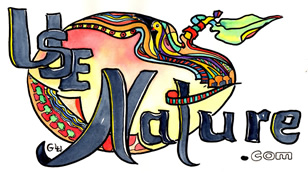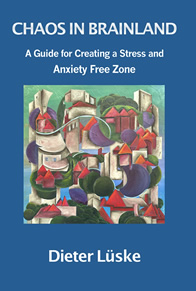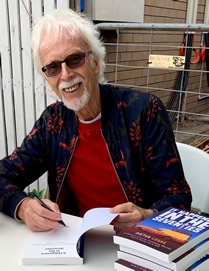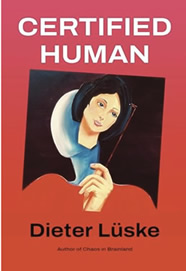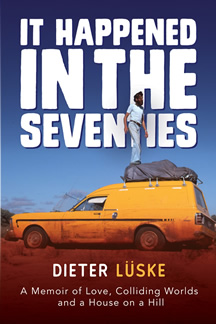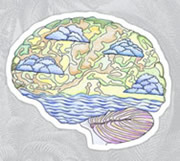useNature.com ... Holistic Health - Emotional Choice Counselling - Triggering Emotions
Triggering Emotions
EMOTIONS AND THEIR FUNCTIONS
Lifestyle Online Magazine - Holistic Health Information
Article: Emotional Choice - Triggering Emotions

Article extracted from a workshop & book called:
DO YOU BELIEVE IN YOU - by Dieter Luske© - Gold Coast
... all following articles, are written as workshop manuscript
... questions were asked to stimulate active participation.
ARTICLE NUMBER - 24 - Chapter Three
EMOTIONS AND THEIR FUNCTION
Triggering Emotions
| NOTE FOR PRACTITIONERS: Combining Natural Therapies with Counselling modalities is what a Holistic Health is all about. - The Chaos in Brainland Book addresses this issue and provides a wide array of counselling techniques suitable to enrich a Holistic Natural Health Clinic for practitioners and patients alike. - BUY NOW |
... but first lets see what we know so far ....
7 Step Summary :
-
step : Be aware of your emotions.
-
step : What specific emotion do you feel.
-
step : What is its message and functional attribute.
-
step : Is it matching the situation.
-
step : If yes - go with it and express it.
-
step : If no - change it.
-
setp : Change by:
tempo: speed up, slow down.
time-frame: past, present, future.
behaviour - acting.
Those seven steps bring you a certain control over your emotions, but there is still something missing.
We still don't know how to actually change an emotion.
We just know how to more or less stop one emotion that we don't like.
The real change is to change the emotion which does not match a situation, with one that does.
To do that, you naturally have to know which 'new' emotion you need and how to trigger it.
Knowing a specific emotion automatically will give you the opposite emotion.
That is the first step in choosing a 'new' emotion.
The second step is that by knowing the functional attributes of your emotions, you can now decide for yourself which emotion would be most suitable for your specific situation.
The ability to think about your emotions in terms of their usefulness is important.
Having emotional choice, will help you to climb out of an emotional trap.
Are you ready to start climbing?
STEP 1: you have the knowledge and awareness to know what kind of emotion is useful for you at any given situation.
Example: you feel inhibited and haven't got the courage to ask for a pay rise. You are aware of this emotion and say thank you, the time has come that I do something about my inhibitions in talking to people in 'higher' positions.
So you ask yourself:
Question: "If I feel 'inhibited' in this situation, what will be the outcome?"
Answer: The outcome will be stuck, no pay rise!
Now, use that question to find your new proper emotion.
"If I feel' ......................................... : in this situation, what will be the outcome?
( just a hint .. a supportive emotion may be courage)
Use the dotted line to put your 'new' emotion in, and feel in yourself what the outcome will be.
Once you are sure which emotion will be to your advantage, you have to know how to trigger this precious emotion for you.
STEP 2: TRIGGERING A NEW EMOTION!
In fact, we all know how to trigger an emotion.
Have you got a special song?
If you hear that song, does that make you feel different? I bet it does. For the moment, just know that it doesn't matter whether you literally know a specific emotion or not. You can prompt any emotion, by either remembering it or by simply imagining that certain emotion.
Remember, the brain can't differentiate between real or imagined.
a) MEMORY is the easiest way. By directly remembering the emotion you would like to have, seeing once again what you saw, hearing what you heard and most importantly, feeling what you felt, you will start to feel that original feeling again.
b) FANTASY may be the next way to stimulate an emotion you want to feel. By imagining, making up the picture, sounds and therefore the feeling you want, you create a 'new' original emotion. The new emotion has been created by watching a movie in your mind, and as with any good movie you react accordingly with an emotion. You would favour this method for emotions you had not experienced before, or those you find hard to trigger any other way.
c) ACTING is another way to awaken an emotion you want. By adjusting your body posture, voice, behaviour, breathing etc., you act out the emotion you want.
By acting out that emotion, you will feel that emotion, therefore creating a perfect feedback loop, as feeling that emotion will give you that emotion. We all know how emotions show on other people. I am sure that you can tell what specific emotion a person is feeling, just by what you see. You may know that subconsciously. Being aware of it, however, will help you in acting out success, happiness, shyness or what ever it is that you want to express.
Acting is extremely effective and there is nothing wrong with it. If you are honest with yourself, you would admit, looking back at your life, that half of it was acted anyway. In fact, you even may have a hard time, telling apart acting from being 'truly yourself'. If you feel put down by somebody, the best way to get back your confidence is to act confidently. By doing this you will become confident, as there is no real difference between acting or being yourself.
What is 'being yourself' anyway? The way you want to be, or the way you believe you are? How have you become the way you believe you are? By acting?
Acting can be classed as trying out new behaviour or going through new sets of experiences.
Starting a new job, meeting a new person in your life, finalising a business deal, etc., are you presenting yourself, as your natural self or as the person you want the other people to see?
I guess the latter, therefore you are acting. Acting and being your normal natural self go hand in hand. Acting is part of life, and you may as well use it in a positive way, use it as a personality builder.
d) EXTERNAL STIMULUS is making an association with something you know, which will give you a specific emotion. Certain music may arouse a romantic feeling in you, so if you want to feel romantic, you know what to do. Play that record or CD, or failing that, hum, whistle or sing that song to arouse the romantic feeling again. This works with all your senses, especially smells, which may remind you of your childhood and its emotions.
Find out which emotion you can trigger by an external stimulus.
You probably use this technique already without being aware of it.
Which music puts you into a relaxed mood? How many people do you know, who need a glass of wine or whisky, etc. when they come home from work to 'unwind'?
It is not necessarily the alcohol which makes you unwind, it is more likely the association you have with that habit. So, make yourself aware.
Do you become relaxed, by looking out into the surf, watching wave after wave washing to the beach? Do you become exited by watching a favourite sporting event?
Do you get hungry, by smelling certain foods? (If you want to reduce weight, you know now what not to do)! The list is endless.
ASSOCIATION EXERCISE:
For at least a week, become aware what it is, that gives you certain emotions and feelings. Use this new found awareness to trigger certain emotions and find out whether it works. If it does, you will be able to use these associations to trigger an emotion when you really need it.
TRIGGERING AN EMOTION - SUMMARY
There are various ways to trigger the emotion you want.
a) Remembering the emotion you want. See what you saw, hear what you heard and most important of all, feel what you felt.
b) Use fantasy, imagination, making pictures, sounds and feelings in your mind. Remember, the brain can't differentiate between real or imagined.
c) Remember acting? You can act the emotions you want. Who are you? The person you believe you are, or the person you would like to be?
d) External stimulus-association: any picture, scene, sound, music, smell etc. which triggers the feeling you want is an association. If the ocean calms you down, you know with what to associate if you need to feel calm!
EXERCISE: Find out your own best way to trigger the emotion you want.
Association as a concept can be used for nearly everything. If you have to feel responsible, find out where you usually feel responsible, then keep that feeling where you need it.
Now you know how to trigger, stimulate or arouse emotions, but what about keeping those emotions? Let's see about that.
Continue ... next Article - click >
Keeping an Emotion means Anchoring Emotions
Article provided by the Editor - Dieter L.
Excerpt from a workshop & book - published 1993 - titled; "Do you believe in You"
www.usenature.com - Dieter Luske ©
or go back to the Article Menu > Self Help Article Menu
Dieter Luske - Author
Certified Human
Sci-Fi Crime Novel
Society has been quietly infiltrated by machines that mimic human appearance.
Overcome
Chaos in Brainland
Dieter Luske on FBBy the Editor of useNature:
Buy Now
It happened in the seventies
An intriguing story of personal risk-taking, self-discovery and profound change.
Dieter Luske - Writer
